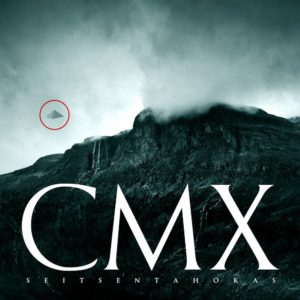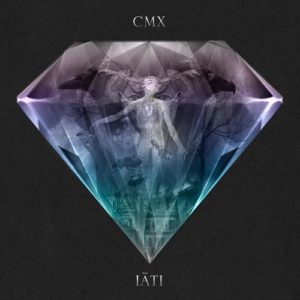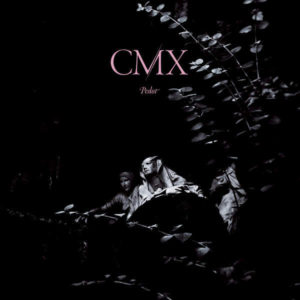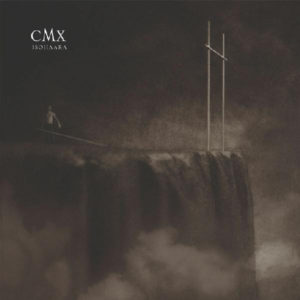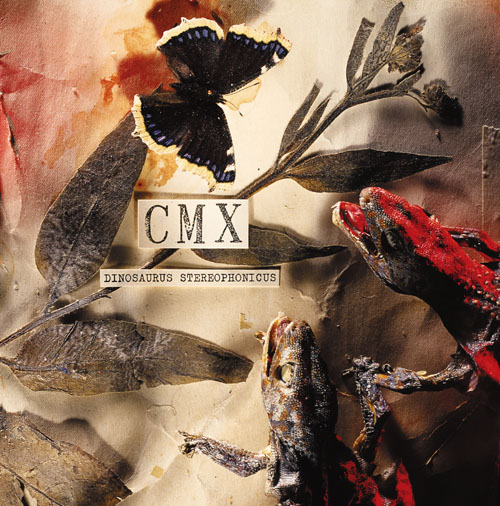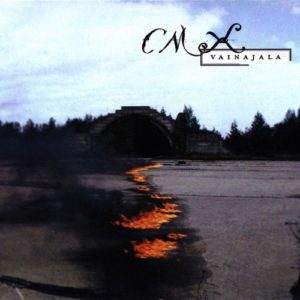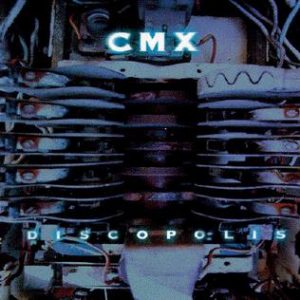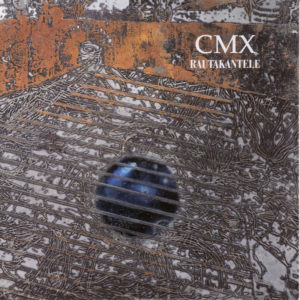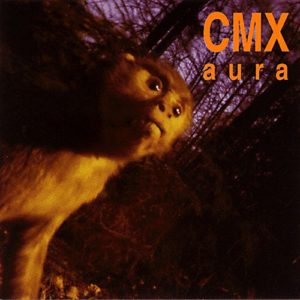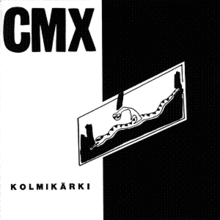CMX

- MEMBERS:
- A. W. Yrjänä – vocals, bass
- Janne Halmkrona – guitar
- Timo Rasio – guitar
- Olli-Matti Wahlström – drums
BIOGRAPHY
CMX, originally Cloaca Maxima, is a Finnish rock band. They originally played hardcore punk, but soon expanded to play a wide variety of rock formats, including progressive rock, heavy metal, and mainstream rock ‘n’ roll. Throughout their career, they have been influenced by progressive rock bands such as Rush, Yes, Tool and King Crimson. The progressive influence is most evident on their albums Dinosaurus Stereophonicus (2000) and Talvikuningas (2007).
CMX have gradually gained large-scale mainstream following in Finland. They are especially known for the poetic lyrics of A. W. Yrjänä that often contain references to mythology and religion. Finnish rock magazines, particularly Rumba, have named them Best Band of the Year multiple times, and even Best Band of All Time on one occasion.
History
Early years 1985-1990
CMX was founded on Good Friday 1985 in Tornio, Finland by A. W. Yrjänä (18 at the time) and Pekka Kanniainen. The band’s original name, Cloaca Maxima, Latin for the “Greatest Sewer”, was taken from a footnote of H. P. Blavatsky’s book Isis Unveiled. Over the next six months Kanniainen became the drummer, Yrjänä the bassist and singer, and Kimmo Suomalainen the guitarist. The band played mainly fast hardcore punk with the vocals sung in English; the language, however, soon changed into Finnish. The band shortened its name to CMX in 1986.
The first EP Johannes Kastaja was recorded 1987 in Kemi and released in 1988. The same year CMX performed for the first time outside of Tornio and its neighbouring areas, at Lieto punk rock festival. In 1989 the EP Raivo was released on a small label Bad Vugum. The band’s first appearance at the Tavastia Club in Helsinki followed.
The first full-length album Kolmikärki was released in January 1990. The album received practically no radio airplay and sold less than 2,000 copies during the first year. During the spring Pasi Isometsä was brought on as a second guitarist, however he would only stay in the band for less than a year. As the band moved south to Helsinki in late 1990, guitarists Isometsä and Suomalainen weren’t willing to leave Tornio and eventually quit the band. They were replaced by Janne Halmkrona and, in early 1991, Timo Rasio. This lineup would remain the same for the following six years. In early 1991 they recorded another EP, Tanssitauti, and later that year the band’s second full-length album, Veljeskunta. The aggressive hardcore approach of the album was generally well received by the press.
Mainstream success
1992’s Aurinko, released by the international EMI record label, won CMX both the Album of the Year and Band of the Year awards in a poll by Finnish Rumba music magazine. The album saw CMX largely abandon the hardcore style in favor of more accessible mainstream rock songs.
In 1994, Aura was released. The album continued the trend towards mainstream audiences, which was criticized by the band’s early hardcore fan base. Aura contained some of the band’s best known songs to date, including the etheric ballad “Ruoste” and the radio-friendly (though lyrically hardly traditional) love song “Kultanaamio”.
The trend continued with Rautakantele, released in 1995 and produced by Yrjänä. Essi Wuorela appeared as a guest artist. “Pelasta maailma”, the only single from the album, received some radio airplay and would later be covered by both Antti Tuisku and Vesa-Matti Loiri.
Changes
For their next album, the band changed radically their approach to recording. Discopolis (1996) was engineered with Pro Tools in the studio and made heavy use of sampling to edit the songs together from a set of short guitar riffs. The album received mixed reviews: Allmusic wrote that “friends of the modern music will find Discopolis very attractive”, while Tero Valkonen, on his analysis of “Kultanaamio“, expressed his dislike for the album, and called the song “Paha” a “rotten bad joke”. Discopolis was the first CMX album to enter the Finnish album charts, peaking at No 3. In 1997, drummer Kanniainen left CMX saying that the band had become too professional for him. Tuomas Peippo was hired to replace him. The same year CMX released a three-CD compilation album, Cloaca Maxima.
1998-2003
The first album with new drummer Tuomas Peippo, Vainajala (1998), was recorded in a cabin in Lapland and produced by Faith No More bassist Billy Gould. According to the band the deliberately minimalistic sound of the album was largely thanks to Gould. Vainajala was the first CMX album to top the Finnish album charts. At the Provinssirock festival 1999, CMX announced that they intended to stop playing live in order to concentrate on their studio work.
Dinosaurus Stereophonicus (2000) was CMX’s nod toward 1970s progressive rock bands, such as King Crimson, Pink Floyd and Yes. A two-hour double album, it contains progressive elements not before associated with CMX: Three instrumental pieces, an emphasis on keyboards, long solos, and song lengths exceeding 10 minutes. CMX’s first number 1 single, the peaceful and melodic “Myrskyn ratsut” was released before the album and featured strings and steel guitar.
By the time Isohaara (2002) was released, CMX had already abandoned the idea of becoming a full-time studio band and started touring again. The album was considered slightly heavier than its predecessor, and the guitar riffs of “Minne paha haudattiin” were compared to the music of Timo Rautiainen & Trio Niskalaukaus and Kotiteollisuus. The album’s lyrics concentrated less on mythology and religion and were closer to traditional rock lyrics, albeit keeping a dark, melancholy tone. Although less present than on Dinosaurus Stereophonicus (2000), progressive influences hadn’t been totally abandoned: The band uses a child choir on the title track and the uptempo rocker “Pohjoista leveyttä” contains a harmonica solo.
Bad Vugum re-released the first two CMX albums in 2002 as “Gold” versions that also included their early EPs. Kolmikärki Gold included EPs Johannes Kastaja (1987) and Raivo (1989), and Veljeskunta Gold contained EPs Tanssitauti (1990) and Musiikin ystävälliset kasvot (1998).
A year after Isohaara, Aion (2003) followed. The album was put together around a common theme of the essence and symbolism of evil. It was both a critical and commercial success and was described as a highly experimental album for such an established band. Guitarist Halmkrona plays trumpet on the first track of the album, and violins and synthesizers are heard on several songs. Both “Melankolia” and, four months later, “Palvelemaan konetta” peaked the singles chart.
2004-present
The band’s second three-CD compilation Cloaca Maxima II, released in 2004, followed the format of the 1997 Cloaca Maxima closely. Both consisted of 44 songs on three CDs, the first one concentrating on faster rock songs, the second on ballads and the third on B-sides. The compilation covered four albums from Vainajala (1998) to Aion (2003) and also featured three previously unreleased songs. The band had originally intended the compilation to only include the B-sides, and indeed the third disc was the one that received some praise from the press.
Pedot (2005) showed some influences from contemporary rock bands such as Tool, A Perfect Circle and System of a Down, and combined straight rock songs with heavier and lighter elements, such as the minimalistic ballad “Eteläisen tähtitaivaan kartoitus” and the aggressive double bass drum sound of the title track. “Uusi ihmiskunta” was a number one hit, the sixth one for CMX in just over five years.
On the Tuuliajolla 2006 tour on lake Saimaa, CMX recorded a song in collaboration with fellow rock bands Kotiteollisuus and 51Koodia. Ambiguosly named “Vapaus johtaa kansaa” (“Liberty Leading the People”) was written by Yrjänä and released in 2006. It reached number one on the Finnish singles chart.
CMX’s following album, Talvikuningas (2007), was a space-themed rock opera and contains only one song, divided onto 12 tracks without pauses. Originally, the story about the power and fall of the Winter King (Talvikuningas in Finnish) was going to be the story of a novel by Yrjänä. The first edition of the album was soon sold out despite being much more expensive than a regular album. The press reviews were largely positive. Helsingin Sanomat newspaper called the album CMX’s “third bullseye” after Aura and Aion, while Soundimusic magazine argued that the album will probably be a mere curiosity in the CMX saga.
CMX’s thirteenth studio album, Iäti, was released by EMI on 29 September 2010. The singles released before the album were called “Sateenkaaren pää” and “Linnunrata”.
Drummer Tuomas Peippo left the band in 2012 due to his job as a dentist. The fourteenth studio album, Seitsentahokas, was released in February 2013. The drummer for the album was Olli-Matti Wahlström, known for bands Kumikameli and 51koodia, who later in the spring became the official member of the band. The first single released from the album was “Kusimyrsky” in November 2012, followed by “Rikkisuudeltu” in February 2013.
Fifteenth studio album Mesmeria was released in 2015. It was produced by Arto Tuunela and first without producer Rauli Eskolin since Isohaara released in 2002.
In 2018 the sixteenth album Alkuteos was released.
Popularity
CMX are practically unknown outside Finland. However, Billy Gould of Faith No More produced their 1998 album Vainajala. In Finland, CMX has won the Rumba magazine “Band of the Year” reader poll ten times. In 2005, the band was even voted the “Best Band of All Time” by the magazine’s readers, in favour of such bands as The Beatles, Metallica, Led Zeppelin and Iron Maiden. In a City magazine poll, they were voted the best Finnish band of all time. In a Helsingin Sanomat newspaper reader poll in 2007, the readers voted both “Ruoste” and “Kultanaamio” into the top 10 of Finnish rock songs. CMX were the only band to have two songs in the top 10.
Ten CMX albums, including their both compilations, have been certified gold, each having sold approximately 20,000 copies. CMX DVD has also reached the gold record threshold for DVDs, which is 5,000 copies. The platinum record threshold for albums in Finland, which none of the band’s albums have achieved, is 30,000 copies sold.
Musical style
Early CMX was influenced by heavy metal, punk rock and progressive rock. During their career, they have explored several different genres of rock music. Their early EPs and albums up until Veljeskunta (1991) have been mainly hardcore, although combining a variety of styles. From Aurinko (1992) onwards, hardcore has been merely an ephemeral element in their varied expression. Progressive rock elements are always present in the band’s music, most evidently on Dinosaurus Stereophonicus (2000) and Talvikuningas(2008). Many of the band’s best known songs are ballads, such as “Ruoste” and “Pelasta maailma”.
Lyrics
All the band’s lyrics are written by vocalist Yrjänä. His texts are often poetic, symbolic and intertextual, and contain themes of mythology, religion and philosophy. Many CMX fans are attracted to the band particularly for Yrjänä’s texts, although there are also people who can’t stand the band because of them.
DISCOGRAPHY
Alkuteos / 2018
1. Elementa
2. Paratiisin Eeva
3. Puolikas hyvää
4. Neljäkymmentä päivää
5. Verenpuna
6. Sulaneet muovisotilaat
7. Konx Om Pax
8. Alkemisti
Alkuteos is the sixteenth album by the Finnish rock group CMX. It was released on February 9, 2018.
Mesmeria / 2015
1. Rakkaudessa Ja Sodassa
2. Hyperborea
3. Laavaa
4. Ojai
5. Kauneuden Pitkä Varjo
6. Mestarirakentaja
7. Valles Marineris
8. Teräs
9. Mystiikan Ontologinen Sydän
10. Tuleen Kirjoitettu
11. Tulisaarna
12. Eksopaleoklimatologi
Mesmeria is the fithteenth studio album by the Finnish rock group CMX. It was released on January 30, 2015.
Seitsentahokas / 2013
1. Valoruumis
2. Etuvartio
3. En tahdo nähdä enää yhtään alastonta
4. Luotisuora
5. Nrsisti
6. Kusimyrsky
7. Rikkisuudeltu
8. Me tulemme kaikkialta
9. Jyrsijä
10. Seitsentahokas
Seitsentahokas is the fourteenth album by the Finnish rock group CMX. It was released in 2013 and ranked first as most sold album on The Official Finnish Charts.
Seitsentahokas is first album with Olli-Matti Wahlström. Career with former drummer Tuomas Peippo ended with previous album Iäti.
Compared to previous album Iäti, Seitsentahokas is more diverse. As polar opposites first single Kusimyrsky is progressive and heavy while second single Rikkisuudeltu is simpler and pop.
Iäti / 2010
1. Sateenkaaren pää
2. Kappaleina
3. Taistele
4. Auringon kultainen kaupunki
5. Kuoleman kulkumies
6. Iäti
7. Totenmann
8. Manisola
9. Kättenpäällepanijat
10. Linnunrata
11. Laulu todellisuuden luonteesta
Iäti is thirteenth album by the Finnish rock group CMX. It was released on September 29, 2010, three years after the previous Talvikuningas. Compared to the previous album Iäti is more of a traditional rock album. It ranked first as most sold album on The Official Finnish Charts.
Iäti is last CMX-album with drummer Tuomas Peippo.
Talvikuningas / 2007
1. Kaikkivaltias
2. Resurssikysymys
3 . Pretoriaanikyborgit
4. Vallan haamut
5. Tähtilaivan kapteeni
6. Kosmologisen vakion laulu
7. Parvatin tietäjä
8. Punainen komentaja
9. Langennut valo
10. Quanta
11. Rusalkai
12. Kaikkivaltiaan peili
Talvikuningas is an album by the Finnish rock group CMX. The title is Finnish and translates to “The Winter King”.
Talvikuningas is CMX’s first concept album. Although the CD is divided into 12 tracks, they flow seamlessly into each other and the record is effectively one long song.
The first limited edition of 8 000 copies of Talvikuningas was released on September 5, 2007. This limited printing features special packaging and a 40-page booklet, which contains extensive artwork and the full libretto to the album. Digital downloads of Talvikuningas became available the same day. A regular CD version with ordinary jewel case packaging and reduced liner notes was released on 9 January 2008.
Story
The album tells the same story as A. W. Yrjänä’s yet-unfinished book. It’s an epic science fiction story taking place in the 25th century. The album’s sections are pieces of the saga of the Winter King. Some previous CMX songs, like Mekaanisten lintujen Puisto (The park of mechanical birds) and Sivu paholaisen päiväkirjasta (A page of the Devil’s diary) can be linked to the story.
Pedot / 2005
1. Eteläisen tähtitaivaan kartoitus
2. Pedot
3. Uusi ihmiskunta
4. Mustat siivet yli taivaan
5. Kain
6. Suojelusperkele
7. Taivaanääreläiset
8. Näkyvän valon olennot
9. Tuulenkosija
10. Syysmyrkkylilja
11. Sanansaattaja
12. Valoa nopeammat koneet
Pedot is the eleventh album of the Finnish rock band CMX. It was released on November 2, 2005. “Pedot” means “Beasts” in Finnish.
The opening track “Eteläisen tähtitaivaan kartoitus” breaks a CMX tradition of starting their albums with powerful rock songs. It is a minimalistic piano-based ballad with no drums. The title track is heavy, progressive and one of the very few tracks where Tuomas Peippo makes use of double bass pedals. “Uusi ihmiskunta” was the first single from the album (the second was “Kain”), and reached #1 on the Finnish singles chart.
Aion / 2003
1. Pirunnyrkki
2. Sielunvihollinen
3. Melankolia
4. Fysiikka ei kestä
5. Palvelemaan konetta
6. Kuoleman risteyksestä kolme virstaa pohjoiseen
7. Kyyn pimeä puoli
8. Sivu paholaisen päiväkirjasta
9. Nahkasiipi
10. Ensimmäinen saattaja
11. Hautalinnut
Aion is an album by the Finnish rock group CMX. It was released on November 11, 2003. The word Aion (or Aeon) is Ancient Greek for “age, life-force” and also a Finnish verb form meaning “I intend (to do something)”.
The album is regarded as something of a concept album by the band and listeners alike; a common theme throughout the songs is the concept of the devil and how this concept manifests itself in the mortal world.
The album was placed at #50 in Finnish rock magazine Soundi’s list of “50 most remarkable Finnish rock albums of all time”.
Isohaara / 2002
1. Päänsärkijä
2. Pohjoista leveyttä
3. Veitsenterä
4. Minne paha haudattiin
5. Isohaara
6. Revontulten repijä
7. Minun sydämeni on särkynyt
8. Post mortem
9. Lihan syvyyksiin
10. Silmien takana
11. Tuulilukko
Isohaara is the ninth studio album by the Finnish rock group CMX. It was released on August 2, 2002.
The album is named after Isohaara power plant in Keminmaa. The band spent six months in the studio because of the chosen songwriting method: the songs were written and rehearsed at the studio under constant perfecting and re-arranging. Musically the album is lighter and more accessible than its predecessor, the over 100-minute Prog-epoch Dinosaurus Stereophonicus.
Dinosaurus Stereophonicus / 2000
2. Kansantalouden saavutusten näyttely
3. Ei koskaan
4. Iliman pielet
5. Ohjelmansiirtoketjun mittaustauko
6. Pelon enkeli
7. Loputtomasti samaa
8. Ilmestyskirjanpitäjä
9. Kylmänmarja
10. Baikonur
11. Negatiivinen alkusoitto
Disc 2
1. Jatkuu niinkuin sade)
2. Tuonen lintu
3. Luuhamara
4. Tämän runon tahtoisin unohtaa)
5. Kultaiset portaat”)
6. Meidän syntimme
7. Myrskyn ratsut
8. Karsikkopuu
9. Olkoon täysi sinun maljasi
10. Suurta yötä päin
11. Tähdet sylissään
Dinosaurus Stereophonicus is the eighth album by the Finnish rock group CMX, released in 2000. It was recorded after the band had decided to stop touring and become a full-time studio band. The decision only lasted till 2002.
The two-hour-long double album is heavily influenced by 1970s progressive rock, such as King Crimson, Pink Floyd and Yes. Many of the songs contain long solos and odd time signatures. Keyboards are also an important part of the album’s sound.
Despite being over six minutes long, “Myrskyn ratsut” was CMX’s first number one single. String instruments and steel guitar can be heard on the slow, calm and melodic song. Shortly thereafter, “Jatkuu niinkuin sade” became the second CMX song to top the Finnish singles chart. Dinosaurus Stereophonicus was certified gold quickly after its release.
Vainajala / 1998
1. Iskusävelmä
2. Surunmurhaaja
3. Vainajala
4. Vierasta viljaa
5. Ei yksikään
6. Taivaan lapset
7. Sillanrakentaja
8. Laulu palavasta linnusta
9. Eufrat
10. Kirjeitä paratiisista
11. Arkangeli
12. Vanha talvitie
Vainajala is an album by the Finnish rock group CMX. It was released in October 1998. Vainaja is Finnish for a dead person, Vainajala meaning a name of a place inhabited by the dead.
The style that Vainajala was produced was highly exceptional: The band went to a small cottage in the middle of Lapland with mobile recording equipment and producer Billy Gould, who had previously shown interest in the band largely unknown outside Finland. Recording Vainajala took only two weeks, much less than the recording time for any of their other recent albums. The album was later finished at the Herodes studio in Helsinki, but the musical style of the album is still very minimalistic. Only a few visiting artists performed on the album.
Discopolis / 1996
1. Discoinferno
2. Antroposentrifugi
3. Nimetön
4. Aamutähti
5. Jerusalem
6. Vallat ja väet
7. Paha
8. Suljettu astia
9. Epäonnisten liikemiesten helvetti
10. Arcana
11. Silmien ummistamisesta Nansenin galvanointiin
Discopolis is the sixth studio album by the Finnish rock group CMX. It was released in November 1996.
With Discopolis, CMX took a different approach on recording with the goal of making the first entirely Pro Tools -based album in Finland. The basic concept was to build the songs from small pieces, emphasizing editing and production over playing and recording. The result was successful in sales, but received some negative critique in reviews.
Rautakantele / 1995
1. Rautakantele
2. Yöllisiä
3. Palvonnan eleitä
4. Talviunia
5. Kirosäkeet)
6. Ennustaja
7. Päivälintu
8. G
9. Pelasta maailma
10. Linnunhammas
11. Veden ääri
12. Pirunmaitoa
13. Hiljaisuuteen
Rautakantele is an album by the Finnish rock group CMX. It was released in 1995. “Rautakantele” is Finnish and means “The Iron Kantele”.
Rautakantele is the most stylistically eclectic of CMX’s albums. Despite the uneven quality of production in the album (reputedly, the producer forgot to edit the entire drums track), Rautakantele’s lyrics and rugged sound convey the message of an increasing streak of social criticism effectively. Billy Gould of Faith No More named Rautakantele his favourite album of 1995.
Aura / 1994
1. Mikään ei vie sitä pois
2. Sametinpehmeä
3. Elokuun kruunu
4. Ruoste
5. Nainen tanssii tangoa
6. Turkoosi
7. Kultanaamio
8. Raskas
9. Talvipäivänseisaus
10. Työt ja päivät
11. Pilvien kuningas
12. Aura
Aura (1994) is an album by the Finnish rock group CMX.
The album gained the band its first near-hit single and some commercial airplay with “Ruoste”. Although many people consider Aura to be the band’s seminal record, at this point many older fans were already scoffing at the more streamlined, acoustic songs and mellow soundscapes as compared to their earlier hardcore steamrolling.
However, Aura pretty much defines the band’s sound up to this day, with a mixture of heavy and light elements and songwriting reminiscent of 1960s and 1970s progressive rock.
Aurinko / 1992
1. Pyhiinvaeltaja
2. Härjät
3. Aivosähköä
4. Katariinanpyörä
5. Todellisuuksien yleiset luokat I-IV
6. Tähteinvälinen
7. Manalainen
8. Ainomieli
9. Kaksi jokea
10. Timanttirumpu
11. Marian ilmestys
12. Yö ei ole pimeä päivä
Aurinko (1992) is an album by the Finnish rock group CMX. The word “Aurinko” means “The Sun” in Finnish. The album cover depicts a cross section of a pineapple.
The album was the first to mark a considerable move towards more mainstream rock from the band’s hardcore roots, with more streamlined approach to songwriting and distinctibly more vocal singing style in most tracks. Also, Aurinko featured one of their biggest future live hits, “Ainomieli”.
In a City magazine interview in 2005, when asked about which CMX song should never have been made, A. W. Yrjänä has said: “On Aurinko there’s ‘Timanttirumpu’, that makes no sense at all. It’s just growling and drum playing”.
Veljeskunta / 1991
1. Kulje vasten
2. Neljäs valtakunta
3. Metallipurkaus
4. Kuu
5. Veljeskunta
6. Rytmitehdas
7. Helvetin hyvä paimen
8. Vaskiperse
9. Ääni ja vimma
10. Tanssitauti
11. Kätketty kukka
12. Enteitä
13. Täynnä naisia
14. Tulikiveä
Veljeskunta (1991) is an album by Finnish rock band CMX. Its name means “The Brotherhood” in Finnish.
The CD version of Veljeskunta also contains the Tanssitauti EP originally published in 1990. The gold version of the album, released in 2002 also contains CMX’s earlier EP, Musiikin ystävälliset kasvot.
Kolmikärki / 1990
1. Johdatus salatieteisiin
2. Sika ja perkele
3. Nahkaparturi
4. Kaikki nämä kädet
5. Götterdämmerung
6. Kuolemattomuuden ääni
8. 7. Pyydä mahdotonta
9. Pyörivät sähkökoneet
10. Taivas ja helvetti
11. Voittamaton
12. Suuri äiti
13. Kolmas Johannes
14. Hiljaisuuden pelko
15. Liekkisusi, sulkakäärme
Kolmikärki (Trident) is CMX’s 1990 debut album. Despite the punk roots of the early CMX, the musical style of the album varies greatly. There’s hardcore, heavy metal, acid rock, some jazz, ballads and even a waltz. A. W. Yrjänä’s lyrics on the album contain a lot of religious imagery the band is still known for. The lyrics have been influenced by a variety of religions, including Buddhism and Christianity, as well as drawing influence from shamanism. CMX’s music has changed significantly since this early album, but their enthusiasm of experimenting with different musical styles has stayed the same.
The CD version of Kolmikärki released by Bad Vugum also contains the Raivo EP originally published in 1989. The “Gold” version of the album, released in 2002 contains both Raivo and CMX’s first EP, Johannes Kastaja, originally released in 1987.
REVIEWS AND INTERVIEWS
Is your pencil sharp? Do you like writing? Contact us and maybe you could become a part of Nordic Metal Team.
TOURDATES
| Date | Venue | City | Country | Info | Tickets |
|---|


